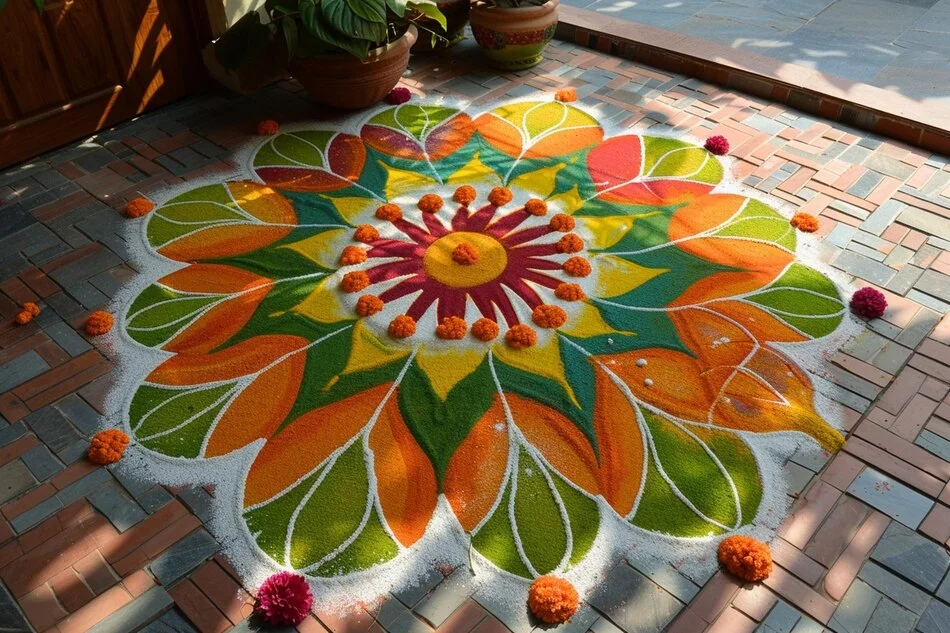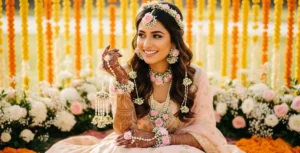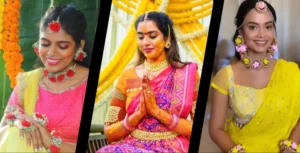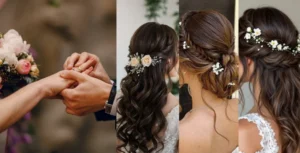Rangoli is an important part of Indian weddings, used to decorate homes and welcome guests with beautiful patterns and colors. These traditional designs are not just for decoration—they carry deep cultural and spiritual meanings. Made using materials like colored powders, flowers, or rice paste, rangolis are believed to bring good luck, positivity, and prosperity.
During weddings, creating stunning rangolis at the entrance or around the wedding altar sets a festive and auspicious atmosphere. From vibrant floral designs to intricate geometric patterns, each rangoli reflects the joy of the occasion and plays a key role in the celebrations. In this article, we will explore ten traditional wedding rangoli designs for home that are perfect for weddings, each with its unique charm and significance.
Top Traditional Wedding Rangoli Designs for Home
1. Floral Rangoli
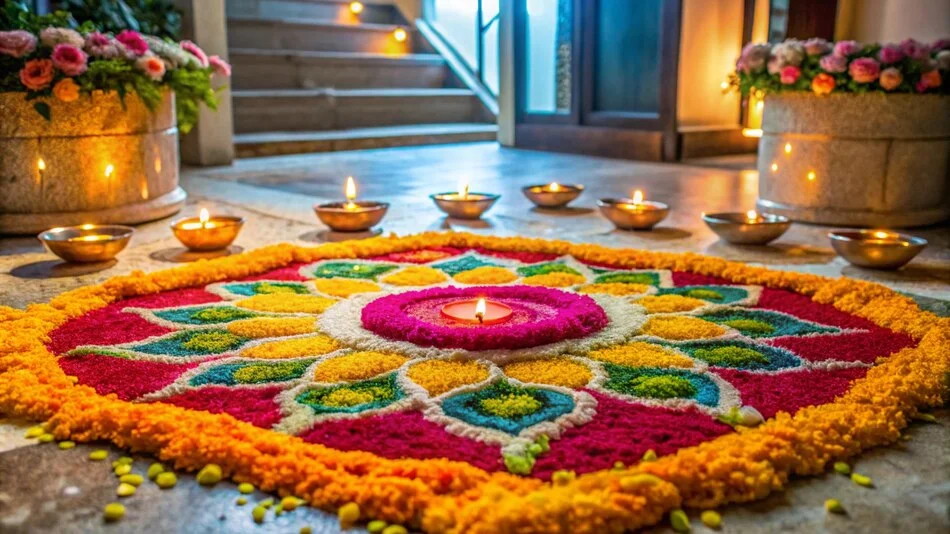
Floral Rangoli designs are preferred as they look exotic and come with traditional motifs which makes it perfect for any wedding. People use flowers like marigolds, roses and chrysanthemums to make motifs that are usually colorful. These designs can be created in circular formations that represent unity, fertility as well as new beginnings, hence the appropriate design for a wedding event. These are drawn as small circular flowers and may just cover a small table while in other occasions, the drawing may take a large area to cover a large area of the floor. This way petals are often stacked one over the other in such a way that the rangoli has a look of relief.
2. Peacock Rangoli

In Indian art peacock is particularly valued, as this bird symbolizes grace, beauty and love. A peacock rangoli design encompasses the colors of this bird of feather to the details such as blue, green and purple. This design is generally large enough to play the role of some sort of focal point in the wedding décor scenario and the major detail of this constitutive design is the extraordinary patterns of the specimens which it imitates: feathers. Peacock is also associated with love, fertility and prosperity and therefore the place of peacock in a wedding is quite appropriate.
Suggested Read👇🏻
3. Ganpati Rangoli
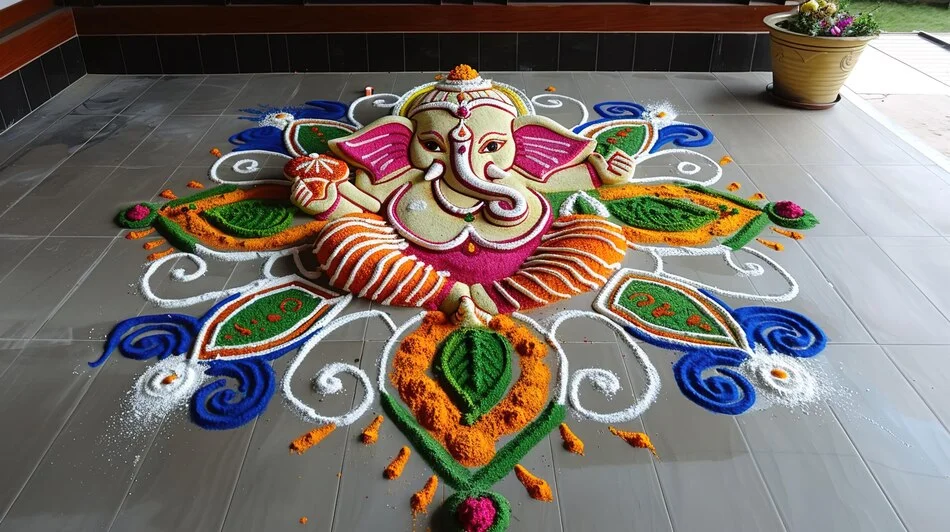
In Indian weddings, Lord Ganesha is invoked before beginning any sacred ceremony as the lord of duality, basically the deity of removing all obstacles. Ganpati rangoli design is a great example of aesthetic beauty along with spirituality which can be done. The design often portrays Ganesha in a sitting posture with his trunk swirled, surrounded by intricate motifs like lotuses, swastikas, or other geometric patterns. This design is normally placed at the entrance of the venue or at the side of mandap, the wedding altar because he is usually portrayed as the god who blesses the couples for marriage.
4. Diya Rangoli Design
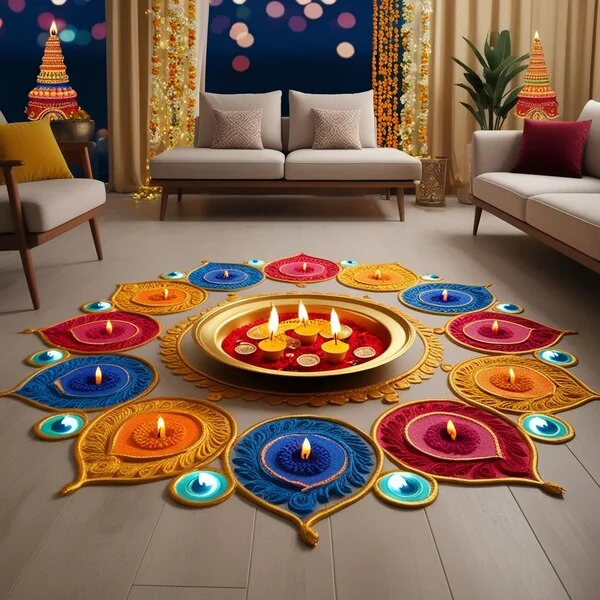
Diya is associated with light and knowledge and that is why diya rangolis are preferred for weddings that take place in the evening. These designs include chains of small, ornamental diy candles arranged either inside the rangoli design or around the pattern created using colors, powders or flowers to brighten the intricate patterns made with rangoli colors or flowers. Diya Rangoli is an emblem of triumph of light over darkness and an initiation of a new life in general.
5. Sanskar Bharti Rangoli

As the name suggests, Sanskar Bharti rangolis are one of the largest and most complex forms of traditional rangoli. These designs have their roots in Maharashtra and they have the capability to cover large areas and would suit a reception hall or the front door of a wedding banquet hall. The design is done in a circular cross-sectional format with smaller circles with geometric patterns and motifs such dots and flowers, even peacocks, the leaves included. Sanskar Bharti rangolis stand out in their similarities or mirror images and accuracy.
6. Portrait Rangoli Design
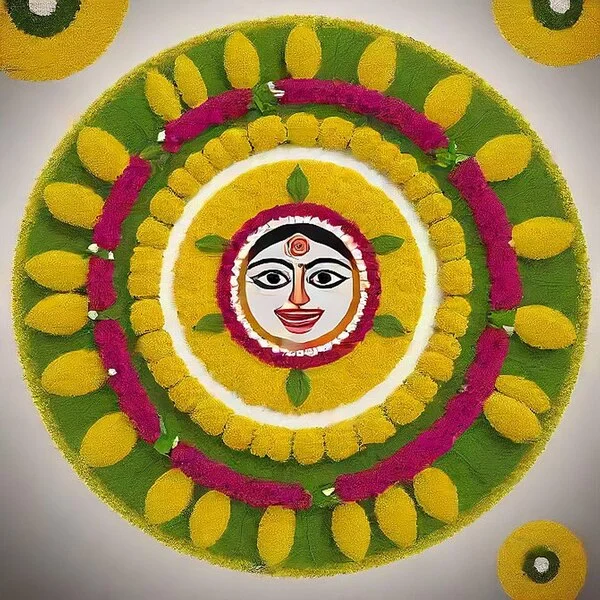
Many varieties of rangoli include portrait kinds and these are among the most elaborate to be created. These designs often depict faces or figures, a bride, a couple, or sometimes gods and goddesses. These can be made using colored powders or flowers and are convenient for the addition of individual touches to the decor of a wedding. For instance, one that has the bride adorned in traditional clothing holding a diya is going to look great when placed at the wedding venue. Portrait rangolis demand exceptionally delicate shading and tremendous detailing, as the preferred color palette is often natural and Grain size is sharp.
7. Lotus Rangoli Design
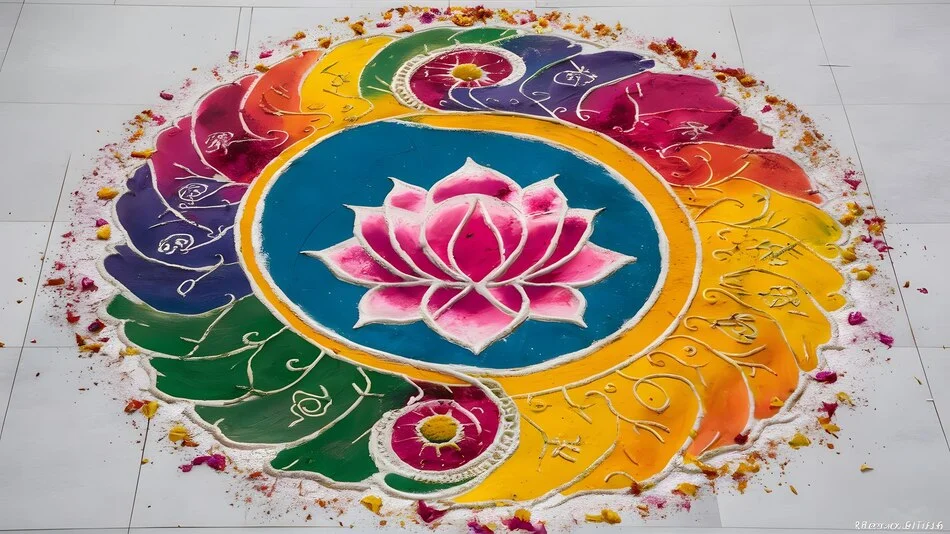
In Hindu culture particularly the lotus is always regarded as holy because it represents purity and enlightenment. A lotus rangoli design which is normally in pink, red and white colors must have been made for wedding functions. The lotus represents enlightenment, as well as the growth of affection, so it is perfect for a wedding rangoli. These designs are generally based on a large lotus that has other symmetrical patterns around this figure.
8. Alpana Rangoli Design
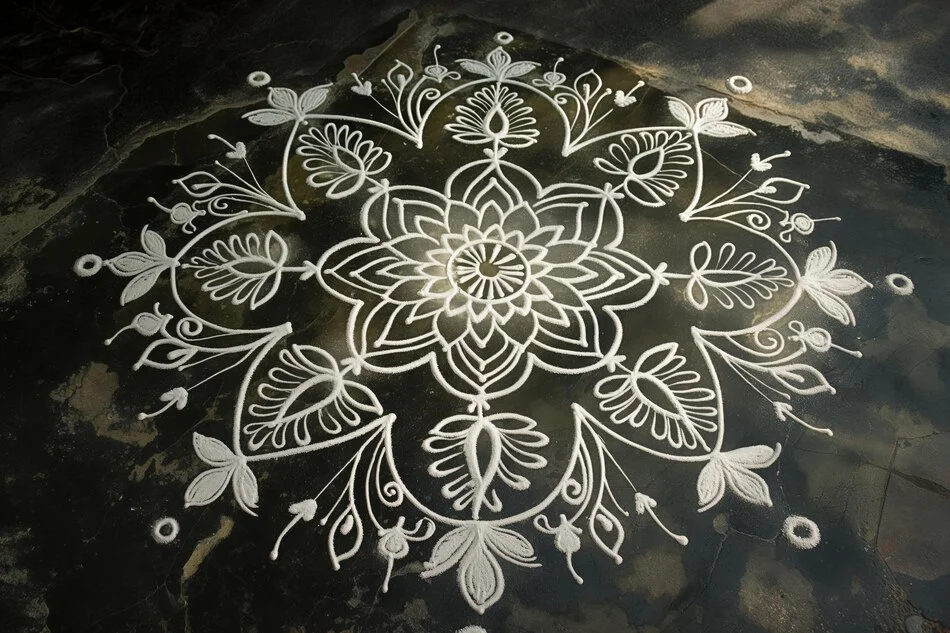
Alpana is a traditional Bengali form of rangoli, often created with rice paste. The designs are typically white and feature flowing, graceful patterns like spirals, lotuses, and conch shells. Alpana rangolis are not overly colorful but are highly symbolic and spiritual, often placed around the wedding altar or puja area. Alpana designs emphasize purity and simplicity, making them a subtle but powerful addition to the wedding décor.
9. Swastik Rangoli Design

The swastik is an ancient Hindu symbol that symbolizes good fortune, prosperity as well as well-being. Swastik rangoli designs are easily made, but it carries immense significance, mostly drawn at the center and is decorated with borders or flowers. The swastik is regarded as the auspicious crude and it is utilized in the marriage ceremony decoration to bring good wishes to the couple.
10. Semi Circle Rangoli Design
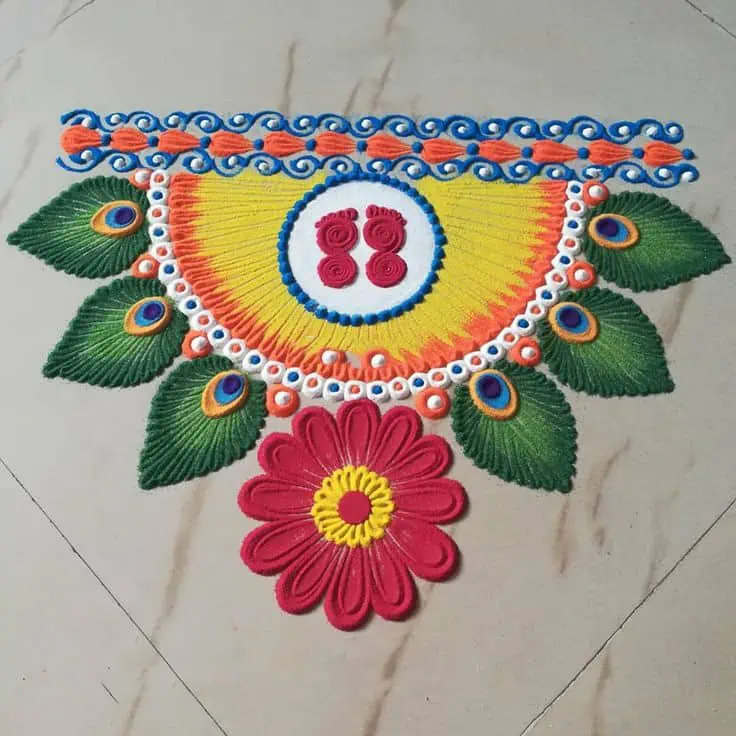
Semi-circle rangolis are a modern adaptation of traditional designs, perfect for spaces with limited room. These designs are often placed against a wall or along the edges of an entrance. While the shape is unconventional, the patterns can be as intricate and colorful as those in full-circle rangolis. These rangolis often feature a mix of traditional motifs, such as lotuses or peacocks, but are contained within a semi-circular shape.
Conclusion
In conclusion, each of these traditional rangoli designs brings a unique element of beauty, spirituality, and symbolism to wedding celebrations. Whether you opt for a grand Sanskar Bharti rangoli or a delicate floral pattern, these designs will enhance the festive atmosphere and invite positive energy into the celebration of marriage.
FAQ
What materials are typically used for making rangoli designs?
Rangoli designs are traditionally made using colored powders, rice flour, flower petals, and grains. For more intricate designs, some people also use materials like powdered chalk, sand, or synthetic colors. During weddings, fresh flowers like marigolds, roses, and chrysanthemums are popular, adding a natural fragrance to the decorations.
Are there any specific rules to follow while creating wedding rangoli?
There are no strict rules, but some traditional guidelines are often followed. Rangolis are usually made at the entrance of the home or the wedding venue to welcome guests and symbolize positivity. It is also customary to use vibrant colors that reflect the festive mood of the occasion. Symmetry is key in most traditional designs, and some even include religious symbols like the swastik or images of deities for auspiciousness.
What is the significance of creating rangoli at weddings?
Rangoli is believed to bring prosperity, happiness, and positive energy to the wedding ceremony. It symbolizes the welcoming of guests and good fortune for the couple’s future. Many designs are chosen for their symbolic meanings, such as peacocks for beauty and love, or lotus flowers for purity and spiritual growth.

